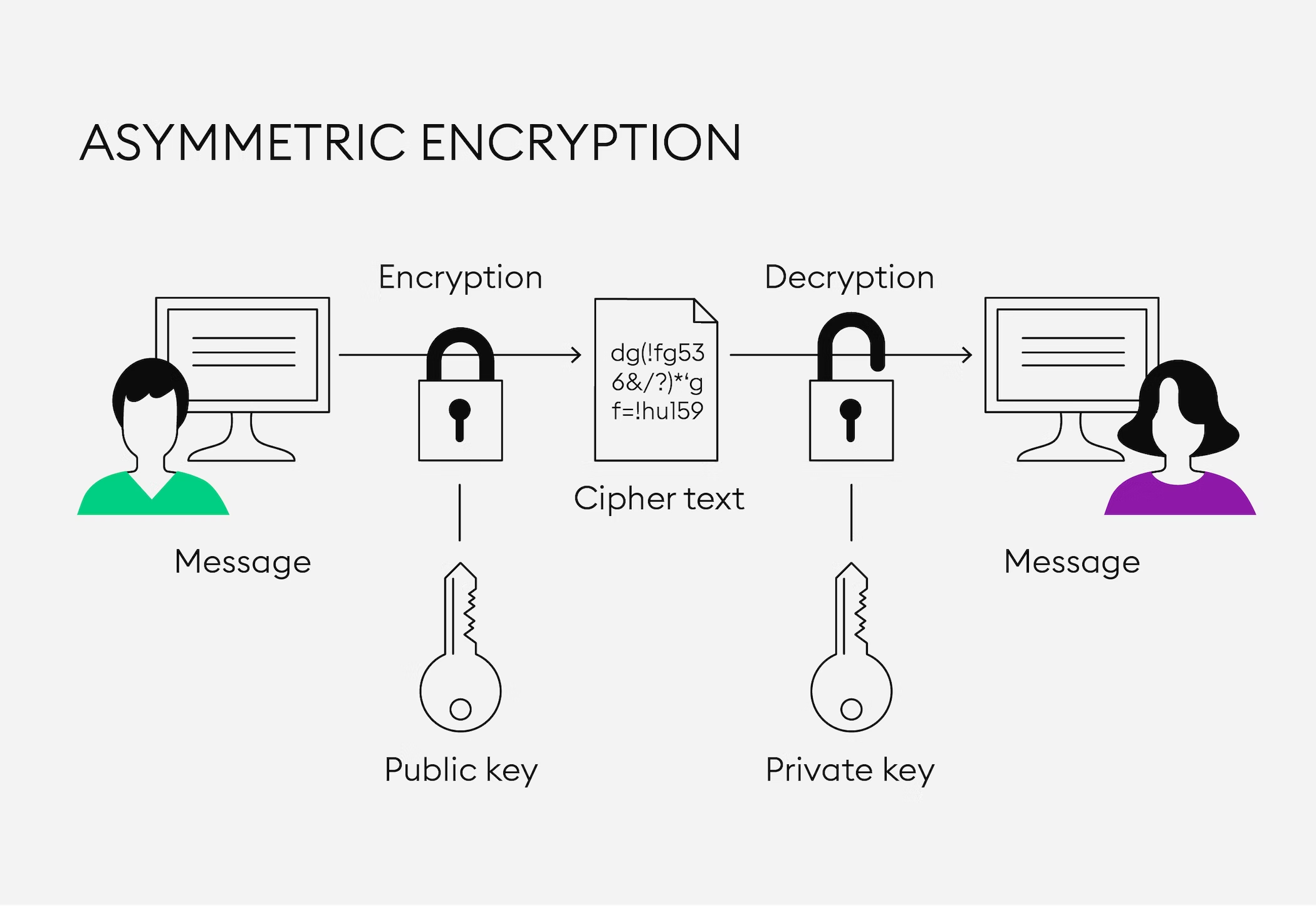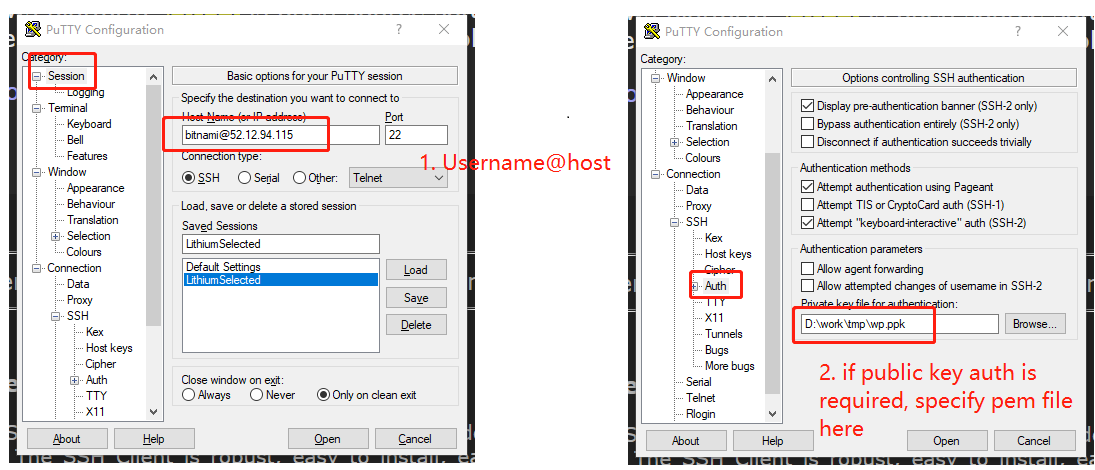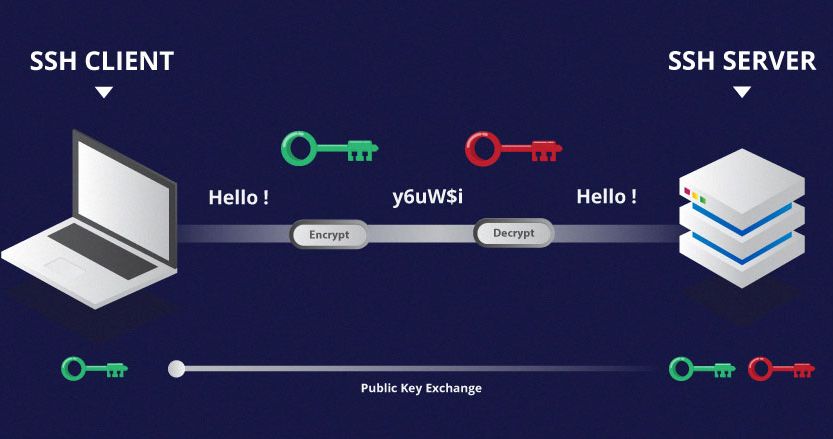SSH and Asymmetric Encryption
Refs
What and Why
- SSH: Secured Shell Protocol
- A cryptographic network protocol for operating network services securely over an unsecured network.
Symmetric and Asymmetric encryption

- Symmetric encryption: Same key to encrypt and decrypt, prone to getting hacked like man-in-the-middle attack. Examples: AES, IDEA, DES, 3DES.
- Asymmetric encryption:
- Based on public/private key encryption techniques. Public key is public to everyone, private key is private to the user theirselves.
- Public key and private key both can encrypt and decrypt.
- Workflow:
- Use A gives his public key to User B
- Use B encrypts data and send encrypted data to User A
- User A decrypts encrypted data with his private key
- It’s the same process when User A sends data to User B
An extremely simple example for Asymmetric encryption:

- Data: A 3-digit number
- Private Key: 11
- Public Key: 91
- Algorithim:
- Encryption: multiplying private key
- Decryption: multiplying public key, take the trailing three digits
- Try and above and you will find that after encryption and decryption, output data remains the same as original data.
How it works(TODO: needs more explanation)
Build an encrypted tunnel:
- Client contacts server and agree on a specific SSH version
- Server sends its host key cryptographic means and other arguments to Client
- Client verifies server identity by host key, and negotiates a session key with server
- Build an encrypted tunnel
As host key cannot prevent man-in-the-middle attack, public key certificate was introduced where a certificate issued by a reliable third-party institute was granted to server to ensure its identity.
Tools
Windows
Command line
- For windows 10,
sshcommand is enabled by default. - Syntax:
ssh -i [identity key file] username@host -v- If public key authentication is required, use
-i [identity key ile]. An identity key is a private key that is used in SSH for granting access to servers. They are a kind of SSH key, used for public key authentication. For SSH, identity file is often suffixed with.pem. See what public key authentication is. - If debugging is required, use
-vdirective to print verbose debug information.
- If public key authentication is required, use
- Example:
PuTTY
- PuTTY is a GUI tool for SSH.
- How to use:

SSH and Asymmetric Encryption


